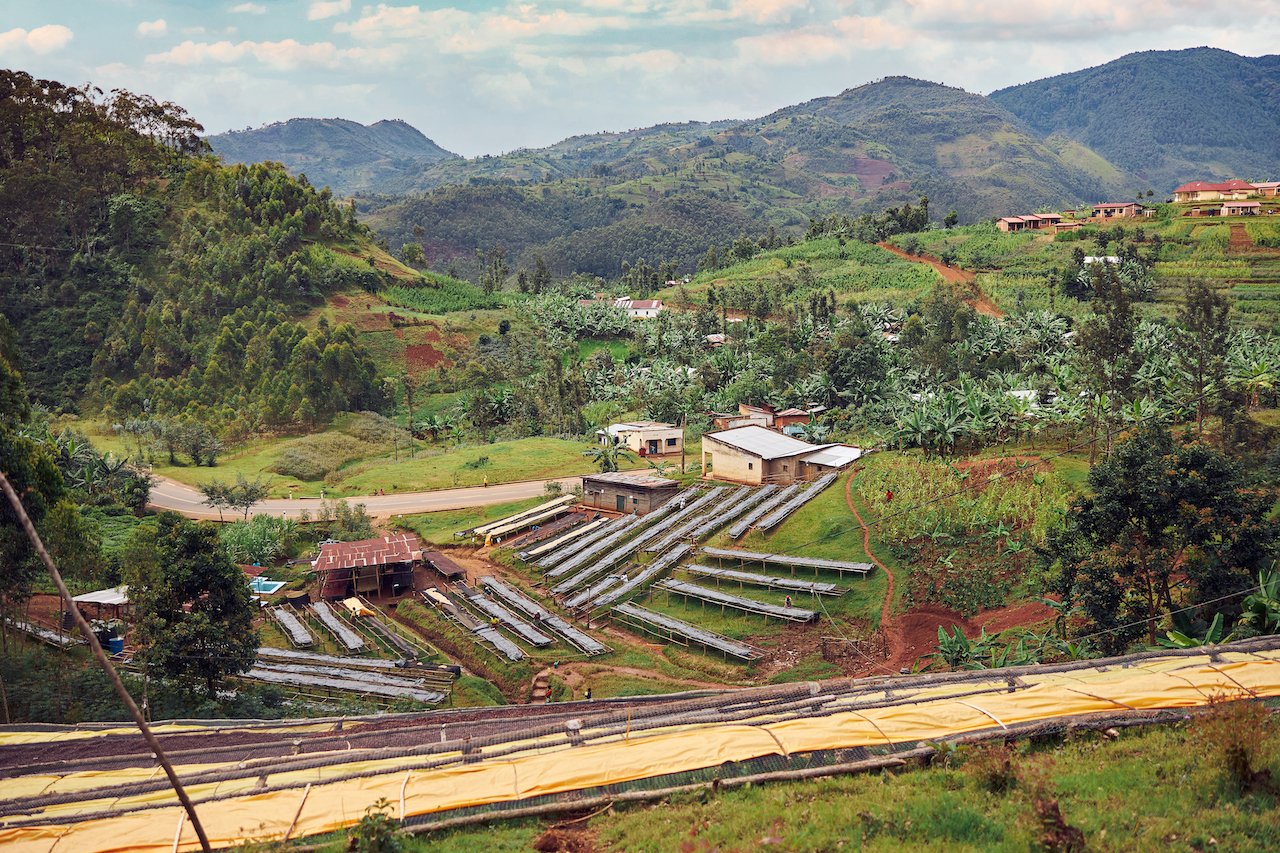coffee sector
Baho’s vision on community is guided by having a synergetic relationship with the community of farmers that we work with, where we guide them and create solutions in a replicable, sustainable and scalable manner leading to economic growth and poverty reduction.
EMMANUEL RUSATIRA
The crop was first introduced by German missionaries as early as 1904, but became more commercialized in the 1930s under Belgian colonial rule. At this time, coffee was grown strictly with a focus on volume and without any concern for quality — likely inspired other efforts in the past century, such as that of the Dutch in Indonesia.
After Rwanda gained its independence in the early 1960s, the coffee sector persisted under this same model of low quality + high volume, but it was now at the mercy of a single monopoly that controlled the entire chain of coffee production and export. Throughout this era, nearly all coffee was being sold as semi-washed. This processing method is similar to what we still commonly seen in Indonesia and some parts of the Americas — coffee cherries are depulped manually, or with small machines, and the seeds are then sold with mucilage still intact to middlemen paying bottom-of-the-barrel prices. Their role was then to finish drying the coffee and pass it along the meandering supply chain. After making pit stops along an extensive line of intermediaries, coffee would eventually make its way to a small handful of large international buyers who purchased the finished product for equally low prices. This went on for a very long time - decades. Following years of consistent political turmoil, a major economic crisis in the 1980s, and the incredibly devastating genocide of 1994, the coffee sector was left completely dismantled.
As Rwanda began to rebuild in the late 1990s, a focus was placed on specific sectors that could generate revenue and employment. The Rwandese government, with the support of international NGOs, set their sights on revitalizing coffee production. Looking to other successful coffee producing countries for inspiration on how they might change the international reputation of their coffee, they came to the conclusions that (a) washed coffee would lead to higher quality and (b) higher quality would make coffee a valuable commodity to the Rwanda economy. And thus, since the early 2000s, the focus has been concentrated on the construction of washing stations throughout the country and pushing to put Rwandese coffee on the global map. The results of this investment have been quite staggering - prior to the genocide, there were only two washing stations in all of Rwanda, and today there are 300+!
In the days of colonial development of the coffee industry, Rwandese people made little off their labor and watched as profits sailed away from their shores. In order to overcome these predatory buying practices that had prevailed during former production models, the National Agricultural Export Board (NAEB) sets a standard cherry price to be paid to farmers at washing stations. The implementation of a fixed farmgate price might seem strange to folks in the specialty coffee world who believe more in the notion of premiums for quality; however, in a case where certain parties have such great economic power, standardized prices serve to protect smallholders from major exploitation. Across the board, coffee quality has undoubtedly been raised and growers are slowly beginning to make more money; however, troubling patterns continue to persist. Still today, just three major buyers have a similar control of the market. With a total purchasing power that claims over 70% of all coffee produced annually, they have major collective influence on the coffee sector. Though the ever-increasing quality is undoubtedly improving the global reputation of Rwandese coffee, many of the profits from coffee continue to leave the country.
The Rwanda coffee sector is unique in that it’s extremely small, which means that it’s possible for buyers to have a serious impact on the entire market. With an average annual export of between 300,000 - 400,000 bags, Rwandese coffee is a drop in the bucket of world coffee production. For context - Costa Rica, considered the smallest in Central America, produces 1.6 million bags annually; and Colombia, the largest producer of Arabica in the world, produces 15 million bags annually. Coffee represents around 20% of Rwanda’s total agricultural export economy, meaning that the government's efforts to make coffee a valuable sector for profit and employment generation has reaped substantial benefits. The potential for impacting the overall economic well-being of the country is possible via coffee, but it must be optimized for that purpose. First and foremost, we believe that more profit must go to locals rather than major foreign companies; and secondly, quality and prices must continue to increase.
We’re excited and honored to be working with Baho Coffee for these very reasons. Emmanuel is one of a very small group of Rwandese people who have started small export companies to move coffee from stations that they personally own and operate. This means we know for a fact that profits are remaining within the country and are being continuously reinvested back into people and communities. There is a deep level of commitment and respect between Emmanuel, his employees, and the farmers who deliver to Baho stations. It’s clear that he is directly invested in the future of his own country. Working with and buying from Baho Coffee is meaningful to us in so many ways; but at the heart of it all, we’re trying to support the Rwanda coffee sector by purchasing Rwandese coffee from Rwandese people.




